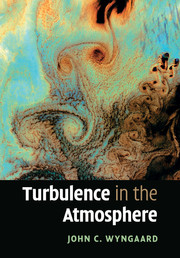3653 results in ebooks in fluid mechanics
5 - Wave-breaking probability
-
- Book:
- Breaking and Dissipation of Ocean Surface Waves
- Published online:
- 25 October 2011
- Print publication:
- 19 May 2011, pp 142-218
-
- Chapter
- Export citation
4 - Fully nonlinear analytical theories for surface waves and numerical simulations of wave breaking
-
- Book:
- Breaking and Dissipation of Ocean Surface Waves
- Published online:
- 25 October 2011
- Print publication:
- 19 May 2011, pp 118-141
-
- Chapter
- Export citation
Frontmatter
-
- Book:
- Breaking and Dissipation of Ocean Surface Waves
- Published online:
- 25 October 2011
- Print publication:
- 19 May 2011, pp i-vi
-
- Chapter
- Export citation
7 - Energy dissipation across the wave spectrum
-
- Book:
- Breaking and Dissipation of Ocean Surface Waves
- Published online:
- 25 October 2011
- Print publication:
- 19 May 2011, pp 232-321
-
- Chapter
- Export citation
Index
-
- Book:
- Breaking and Dissipation of Ocean Surface Waves
- Published online:
- 25 October 2011
- Print publication:
- 19 May 2011, pp 461-463
-
- Chapter
- Export citation
1 - Introduction
-
- Book:
- Breaking and Dissipation of Ocean Surface Waves
- Published online:
- 25 October 2011
- Print publication:
- 19 May 2011, pp 1-11
-
- Chapter
- Export citation
References
-
- Book:
- Breaking and Dissipation of Ocean Surface Waves
- Published online:
- 25 October 2011
- Print publication:
- 19 May 2011, pp 426-460
-
- Chapter
- Export citation

Turbulence in the Atmosphere
-
- Published online:
- 11 April 2011
- Print publication:
- 28 January 2010
11 - Extensions
-
- Book:
- Direct Numerical Simulations of Gas–Liquid Multiphase Flows
- Published online:
- 07 October 2011
- Print publication:
- 10 March 2011, pp 243-269
-
- Chapter
- Export citation
2 - Fluid mechanics with interfaces
-
- Book:
- Direct Numerical Simulations of Gas–Liquid Multiphase Flows
- Published online:
- 07 October 2011
- Print publication:
- 10 March 2011, pp 21-49
-
- Chapter
- Export citation
Frontmatter
-
- Book:
- Direct Numerical Simulations of Gas–Liquid Multiphase Flows
- Published online:
- 07 October 2011
- Print publication:
- 10 March 2011, pp i-iv
-
- Chapter
- Export citation
1 - Introduction
-
- Book:
- Direct Numerical Simulations of Gas–Liquid Multiphase Flows
- Published online:
- 07 October 2011
- Print publication:
- 10 March 2011, pp 1-20
-
- Chapter
- Export citation
Appendix B - Distributions concentrated on the interface
-
- Book:
- Direct Numerical Simulations of Gas–Liquid Multiphase Flows
- Published online:
- 07 October 2011
- Print publication:
- 10 March 2011, pp 279-283
-
- Chapter
- Export citation
3 - Numerical solutions of the Navier–Stokes equations
-
- Book:
- Direct Numerical Simulations of Gas–Liquid Multiphase Flows
- Published online:
- 07 October 2011
- Print publication:
- 10 March 2011, pp 50-74
-
- Chapter
- Export citation
Index
-
- Book:
- Direct Numerical Simulations of Gas–Liquid Multiphase Flows
- Published online:
- 07 October 2011
- Print publication:
- 10 March 2011, pp 322-324
-
- Chapter
- Export citation
References
-
- Book:
- Direct Numerical Simulations of Gas–Liquid Multiphase Flows
- Published online:
- 07 October 2011
- Print publication:
- 10 March 2011, pp 295-321
-
- Chapter
- Export citation
Preface
-
- Book:
- Direct Numerical Simulations of Gas–Liquid Multiphase Flows
- Published online:
- 07 October 2011
- Print publication:
- 10 March 2011, pp ix-x
-
- Chapter
- Export citation
Appendix C - Cube-chopping algorithm
-
- Book:
- Direct Numerical Simulations of Gas–Liquid Multiphase Flows
- Published online:
- 07 October 2011
- Print publication:
- 10 March 2011, pp 284-287
-
- Chapter
- Export citation
8 - Disperse bubbly flows
-
- Book:
- Direct Numerical Simulations of Gas–Liquid Multiphase Flows
- Published online:
- 07 October 2011
- Print publication:
- 10 March 2011, pp 187-203
-
- Chapter
- Export citation
10 - Droplet collision, impact, and splashing
-
- Book:
- Direct Numerical Simulations of Gas–Liquid Multiphase Flows
- Published online:
- 07 October 2011
- Print publication:
- 10 March 2011, pp 228-242
-
- Chapter
- Export citation
